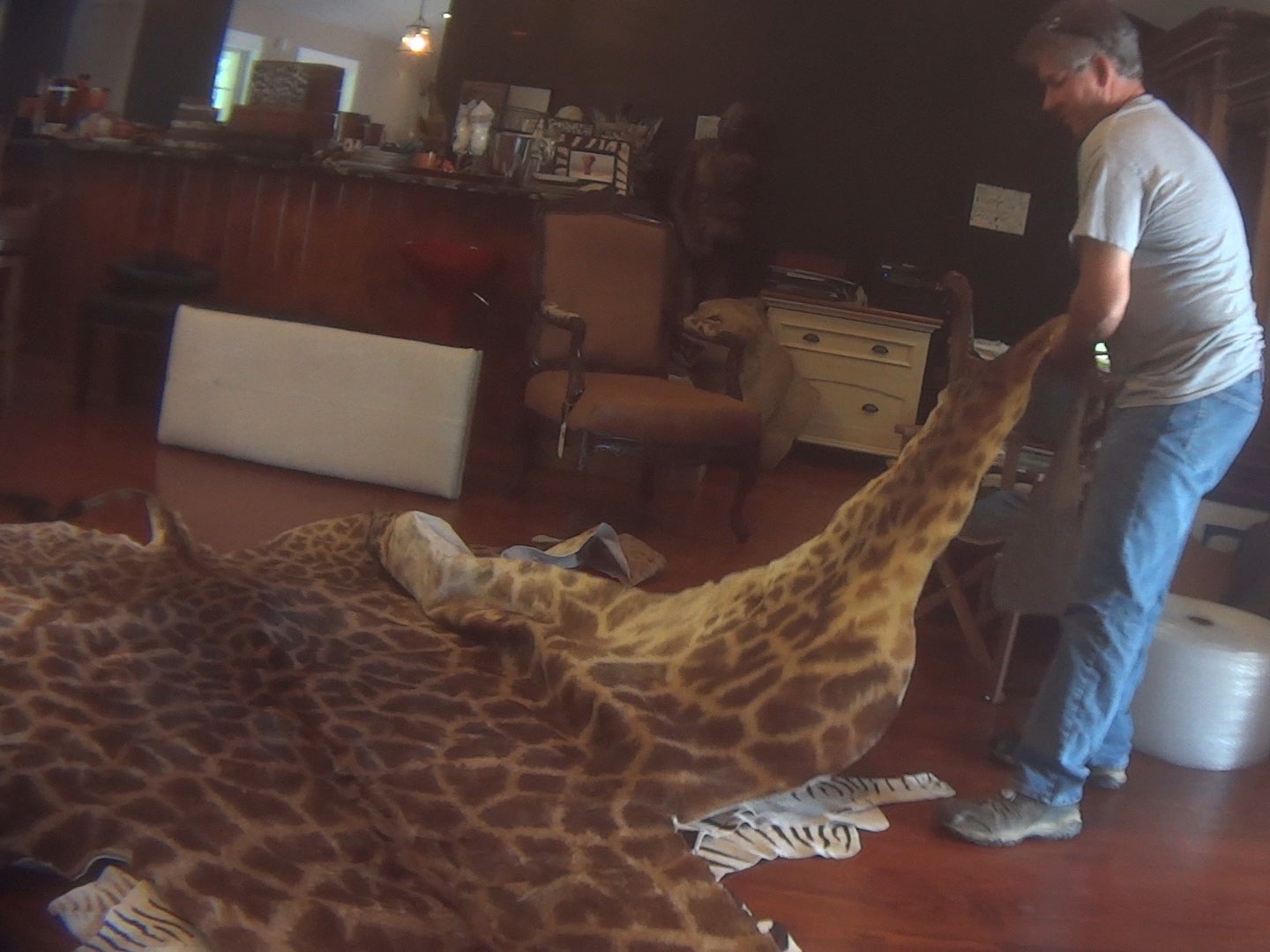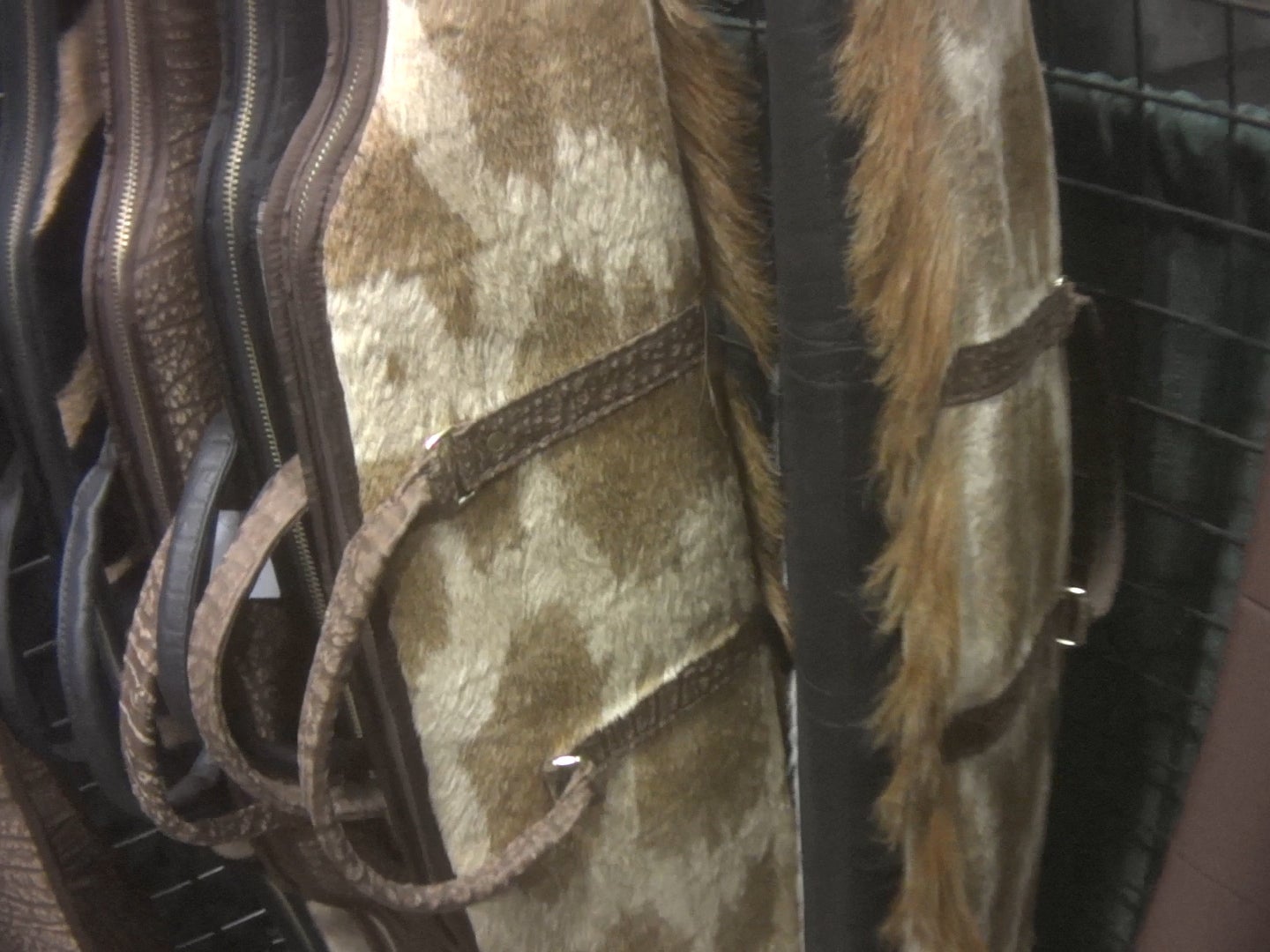US trophy-hunters import thousands of bones and skin parts from imperilled giraffes each year
'We can’t afford any additional pressure amid what experts have dubbed the silent extinction'

Your support helps us to tell the story
From reproductive rights to climate change to Big Tech, The Independent is on the ground when the story is developing. Whether it's investigating the financials of Elon Musk's pro-Trump PAC or producing our latest documentary, 'The A Word', which shines a light on the American women fighting for reproductive rights, we know how important it is to parse out the facts from the messaging.
At such a critical moment in US history, we need reporters on the ground. Your donation allows us to keep sending journalists to speak to both sides of the story.
The Independent is trusted by Americans across the entire political spectrum. And unlike many other quality news outlets, we choose not to lock Americans out of our reporting and analysis with paywalls. We believe quality journalism should be available to everyone, paid for by those who can afford it.
Your support makes all the difference.The US is allowing the import of tens of thousands of parts each year from endangered giraffes killed for their skin and bones.
A populations plummet in Africa, investigators discovered that 40,000 pieces of skin and bone from the creatures were imported into America.
As a result, the sale of trinkets made with those parts is booming.
The Humane Society of the United States said that the body parts were turned into pillows, knife handles, bible covers, gun-case covers, boots and other trinkets.
Most of the animals had been killed by American trophy-hunters. Importing body parts and selling such products is legal in the US.
The world’s tallest animal was classified two years ago as vulnerable after its numbers declined sharply. The International Union for the Conservation of Nature (IUCN), which runs the world’s official endangered species list, moved it from a species of least concern to vulnerable status in its Red List of Threatened Species.
That means it faces extinction in the wild in the medium-term future if nothing is done to minimise the threats to its life or habitat.

Giraffes are threatened by habitat loss caused by human encroachment and poaching by locals in search of bushmeat or the animals’ tails to turn into charms such as bracelets or sewing thread. Climate change and civil unrest are also playing a role, according to the IUCN.
The Humane Society US and other wildlife activists have petitioned the US Fish and Wildlife Service to listing giraffes as an endangered species to protect it. The African Wildlife Foundation puts numbers now at 97,500, down from 150,000 in 1985.
The Humane Society obtained official data showing that nearly 40,000 giraffe products were legally imported into the US from 2006 to 2015.
An investigator who went undercover to 21 locations to track giraffe part sales found a taxidermied body of a juvenile giraffe, selling for $7,500 (£5,800).
He also found:
- A custom-made jacket available for $5,500 (£4,275)
- Western boots made from giraffe leather
- Speciality knives made from giraffe bone
- Giraffe skin Bible covers selling for $400 and furniture
- Bones and bone carvings
- A pillow made with an animal head intact down to its eyelashes
He also discovered that some of the sellers falsely portrayed giraffes as dangerous, suggesting that they needed to be killed in defence of villages in Africa. They are in fact, shy, gentle creatures
Other sellers criminal records for serious animal-related crimes, including the trafficking of rhino horn.
The Trump administration has relaxed restrictions on imports of parts of wildlife killed by trophy-hunters, ushering in what some call a “golden age for trophy hunters”. Documents obtained by the advocacy group Friends of Animals suggested the administration has issued more than three dozen permits to bring lion trophies back to the US, with hunters who donate to the Republicans given special permits.
Donald Trump has also proposed weakening the Endangered Species Act that protects a wide range of threatened species.
Giraffes have evolved to eat leaves from trees and are not aggressive, according to Adam Peyman, of Humane Society International.
Trophy hunting seems to be the primary source of the animals arriving in the United States, but it is not driving the animals to extinction, Mr Peyman said.
However, he suggested that any market for giraffe products puts more pressure on the species.
“We can’t afford any additional pressure amid what experts have dubbed the silent extinction,” he said. “These are products that most people wouldn’t be interested in, but I think it’s important to raise awareness among the public to the fact that these things are sold across the country.”
The Safari Club International, which promotes hunters’ rights, said in a statement to The New York Times that “despite the rhetoric in the media, legal regulated hunting is one of the most effective means of conservation”.
The market for giraffe products, Mr Peyman said, may have inadvertently been increased by a ban on importing some elephant products, which was upheld by the Trump administration late last year.
Subscribe to Independent Premium to bookmark this article
Want to bookmark your favourite articles and stories to read or reference later? Start your Independent Premium subscription today.
Join our commenting forum
Join thought-provoking conversations, follow other Independent readers and see their replies
Comments